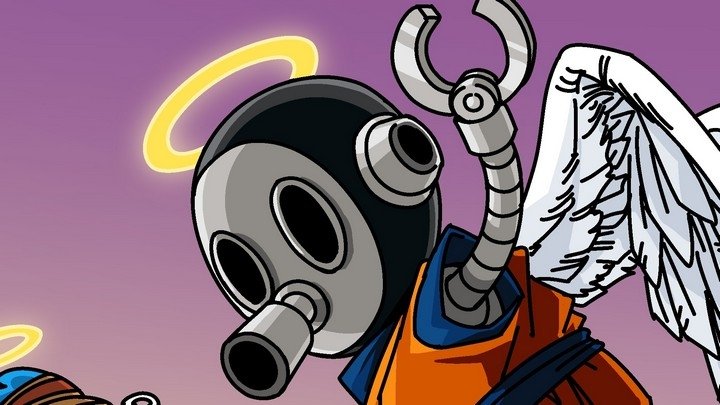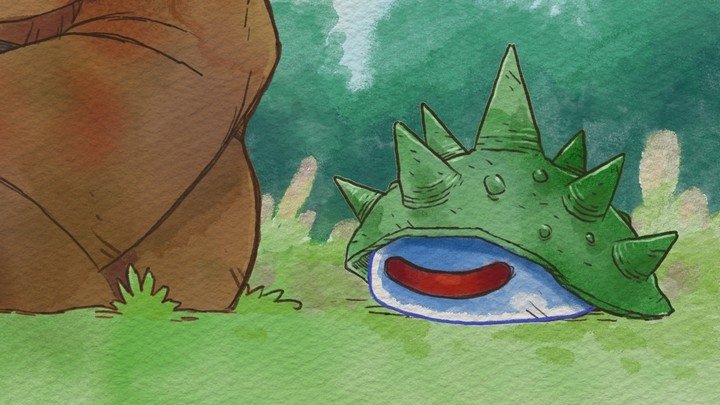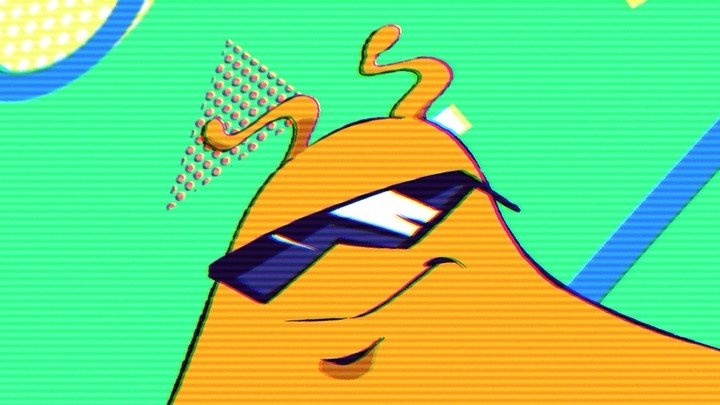Neo Heiankyo Alien is the latest chapter in one of gaming's most unusual tales
A perfect match for the industry's most unorthodox publisher.
Right at the end of June, Columbus Circle, the Japanese seller of retro replacement goods, delivered the latest result of their ongoing efforts as a publisher of new releases on deprecated hardware: a physical version of Shubibinman Zero, a Super Famicom game that missed its planned debut in 1994 and had only been officially released in the ephemeral form of a Satellaview download in 1997. Not content to rest on their laurels, they didn't even let a week go by before announcing their next project, which will bring them back to the original Famicom where they previously staged 8Bit Music Power, Kira Kira Star Night DX, and 8Bit Music Power Final. Like those games, Columbus Circle's current work in progress is being built from the ground up—though it wouldn't be inaccurate to say it's also another game dredged up from the mists of time. Neo Heiankyo Alien is a remake of a particularly curious case from the early history of game development.
In 1979, a reporter from Weekly Asahi magazine interviewed the Microcomputer Club at the University of Tokyo about games being developed on campus—but the reporter came away unimpressed with their efforts, so they instead turned to Itaru Kawakami of the Theoretical Science Group, or TSG. Kawakami didn't really have anything to present either, but he hastily came up with an idea for a game where the player would lure cockroaches into bait traps around an apartment living room. This alone was enough to capture the imagination of various parties, and by the time the TSG got around to actually coding the game on an Apple II, they were looking at offers for an arcade conversion from Sega, Namco, and an electronics manufacturer called Denki Onkyō.

The popularity of the movie Alien (brand new at the time) led the TSG to alter the concept so the player would be fending off extraterrestrials rather than baiting bugs. Somewhere along the way, they also set the whole thing in Japan's Heian period (roughly a thousand years in the past, not that you could tell anyway from the primitive graphics), leading to the game's final title: Heiankyo Alien. For whatever reason, they decided to hitch their wagon to Denki Onkyō rather than either of the future industry giants, paving the way for a coin-op version in 1980. The final game is a simple yet engrossing "trap-'em-up" where the player digs and fills in holes in number of top-down single-screen mazes. Both digging and filling can be applied offensively and defensively: Digging forms a trap for the aliens but blocks your own passage, and filling a hole destroys trapped aliens and can also be done simply to cancel your trap and clear the path. Both actions also take a couple of seconds to complete, which demands careful consideration in light of how quickly the aliens wander around the maze.
In 1983, members of the TSG formed Hyperware, a software house who maintain stewardship of Heiankyo Alien to this day. (Denki Onkyō's role in the story apparently ended in 1989, when they got absorbed by a rival company called Murata Manufacturing. The TSG itself remains up and running at the U of T; their latest work is MNEMO, a "programming puzzle game" you can play in your browser.) Heiankyo Alien has been converted to various platforms over the ensuing thirty-plus years, although the only commercial release to make it out of Japan has been the 1990 Game Boy remake (which Jeremy detailed nicely for Game Boy Works). Fortunately, Hyperware ported the arcade version to Windows in 1999 and still offer it on their site as a free download. Neo Heiankyo Alien still bears Hyperware's name on its title screen, promising the same folks are looking after the game even now.
Columbus Circle promises a "full remake" in Neo Heiankyo Alien, featuring the same core gameplay and even the two-player co-op of the arcade version. The trailer depicts mazes with shifting terrain reminiscent of the Game Boy version, but that appears to be the only embellishment on the original game's ingeniously limited formula. The other significant additions are aesthetic in nature, such as the relatively advanced Famicom graphics (primarily colored dark blue with green and red highlights, which also make it look kind of like an MSX game) and some kind of absurd story set in "Neo-Kyoto City" in the year "299X." They're also throwing in the arcade version in its entirety, just for the love of it.
What Neo Heiankyo Alien may lack in revolutionary design, it poses to make up for with an all-star staff. Just as Columbus Circle's previous Famicom releases featured music from beloved composers such as Manami Matsumae, Tappi Iwase, and Motoaki Furukawa, Neo Heiankyo Alien advertises a laundry list of musicians whose past works include Shin Megami Tensei, Metal Gear 2: Solid Snake, Summer Carnival '92 Recca, and the Ridge Racer series. In addition to music, though, Columbus Circle are pulling in contributions from industry veterans of every stripe, particularly old Namco alums. Package design is being handled by Yūichirō Shinozaki, who worked on a number of Namco arcade games, most notably The Tower of Druaga. Not coincidentally, the box and cartridge label are laid out exactly like Namco's Famicom releases—particularly the precise composition of the label, with the game's title in plain text on a stripe across the top, the game's logo in the top-right, a single emblematic piece of artwork on the left, and an off-the-screen photograph of the game itself (bearing the tell-tale matte texture of a CRT's shadow mask) forming the background.
Neo Heiankyo Alien's graphics come courtesy of Hiroshi Ono, a legendary pixel artist who designed the iconic look of Galaga, Xevious, Dig Dug, and a little game called Pac-Man. Finally, Norio Nakagata serves as the game's producer (and, amusingly, is contributing music as well). The trailer notes Nakagata's work on games like Genpei Tōmaden and R.B.I. Baseball, but after looking up what else he's done, what's stuck out to me is that he's credited as director on Zombie Nation, an off-beat NES game published by Meldac, the Tokuma Shoten label that also put out the Game Boy version of...Heiankyo Alien! Both games share a developer, too: an outfit called Live Planning. GB Heiankyo Alien lacks a staff roll, but I'm guessing Nakagata didn't work on it, or else they'd be calling attention to it. Still, it's amazing that he was even that close, and as someone who got into Heiankyo Alien through the Game Boy version, something feels very right about having a Meldac survivor in the producer's chair after so many years.
Not counting Shubibinman Zero, which was ready and just waiting for them, Columbus Circle's previous works have all been exceedingly simplistic in design; ironically, this update to a game from 1979 may prove to be their most ambitious project yet. And although Heiankyo Alien makes for a fairly light experience when all is said and done, with such a sterling pedigree, gameplay that's withstood the test of time, and Columbus Circle's signature air of passion all around it, it's hard not to feel excited. Fortunately, there's hardly any time to build it up, as it's set to debut sometime late in August. Instead, I'm already thinking ahead to what Columbus Circle's next project might be. With their track record so far, it feels like the consoles of yore could still have some of their best years ahead of them.




